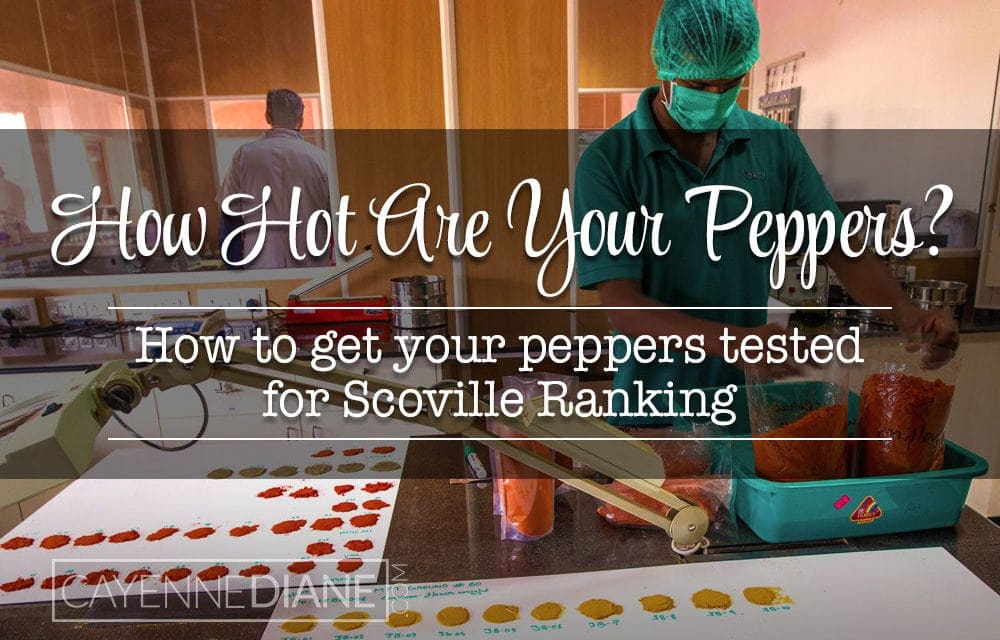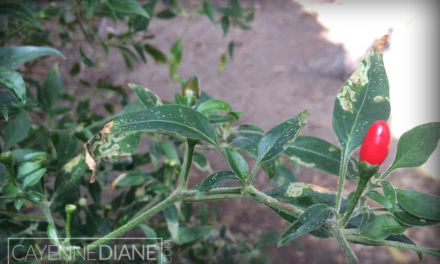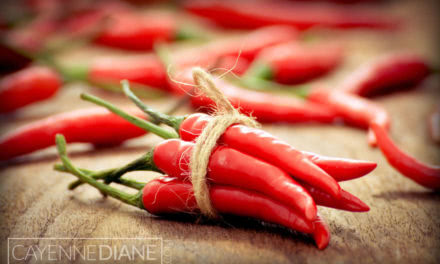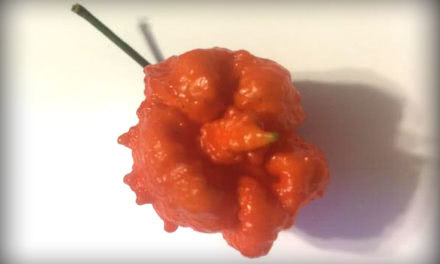Becoming that next creator of the Hottest Pepper in the World can mean big business. Many home growers swear their peppers are hotter than the Reaper.
Ever wanted to find out how your peppers officially rank? Good news! It’s actually not that difficult or expensive to find out for sure.
I wanted to share how hot peppers can be officially tested. And how easy it can be to get your own peppers tested.
I recently had a reader email me (shout out to Bob!) asking how he could get his hot peppers tested. He wanted to see how they might rank on the Scoville scale.
His questions were
- Where is testing is done?
- When is it done?
- Is testing open to the public?
- How to package & transport peppers for testing and
- What are the costs involved in testing?
I honestly wasn’t clear on the entire process myself, but I knew the perfect person that could help. I contacted my friend Troy Primeaux, owner of Primo’s Peppers. He’s a horticulturist from Louisiana and the creator of the 7 Pot Primo.
I knew Troy had submitted his peppers to a few labs to be tested. Years prior he had sent me his official testing results, to ensure that I had his Primo pepper correctly ranked on my Big List of Hot Peppers!
Now, I’ll be honest, when Primo emailed me, and included the official testing documentation about where the Primo pepper should be ranked on my Big List of Hot Peppers, I was like “wow, how cool is that?”
So I knew Troy, who is always willing to help out and provide information, would be the perfect person to shed light on this subject.
Where is testing done?
There are several labs that can perform the tests.
The goal is to determine how many parts per million (ppm) of heat-causing alkaloids are present in a given chile pepper. This is done using high-performance liquid chromatography.
Basically, this means the substance to be tested, in this case, your pepper, is liquified and then separated into its parts.
This can then have the components measured and ranked.
Primo recommends Southwest Bio Labs in Las Cruces, New Mexico. Primo has been testing with them for years. And their results are used to test for New Mexico Chili Pepper Institute.
Your results are confidential unless you allow your records to be publicly accessible.
Testing on Ed Currie’s Carolina Reaper was performed at Winthrop University in South Carolina.
When is testing done?
There are no special time windows to request testing. Depending on how busy the lab is, you may get results within a week or two.
Is testing open to the public?
Yes! Anyone can get their peppers (or food products) tested.
How to package & transport peppers for testing
You can either send fresh peppers for analysis in USPS Priority Mail boxes or, you can ship fresh ground pepper powder. Primo prefers to ship his peppers ground.
To dehydrate your peppers: cut them in half, including the seeds, removing the stems.
Dry them in a food dehydrator such as a Nesco Food Dehydrator, at 125 to 135 degrees for about six hours. You’re looking for the point where the peppers become brittle. Grind them into a fine powder with a coffee grinder or Magic Bullet which will make the dried pepper into a very fine powder. The finer the powder the better the results!
What are the costs involved in testing?
The all important question! What does it cost to get your peppers tested? Surprisingly, it’s far more affordable than I would have thought.
Primo reports it as being $65 about a year ago at Southwest Bio Labs. Contact the lab directly to find out current pricing.
So what about Guinness World Records?
If you want anything to be recognized by Guinness World Records, there are a few more hoops to jump through.
First and foremost, you’ll want to contact them directly and get their Guidelines Pack.
Some of their requirements may have changed, but here are a few to give you an idea of what they require.
- A signed statement of authentication must be submitted by a suitably qualified person, such as a horticulturalist. Include a contact address and phone number.
- The species and/or variety of plant must be correctly identified and stated in all cases.
- SHU and American Spicy Trade Association pungency units must be determined using high performance liquid chromatography (HPLC), which must be performed by a certified laboratory.
- Details of the growth of the plant(s) must be provided.
- Every record attempt requires 2 witness statements. Witness statements are statements of authentication that must be filled out by independent individuals who verify all relevant details of a record attempt.
I hope this clears up some of the mystery around how hot peppers are tested. Now you have some knowledge to start the quest of developing the next hottest pepper or spicy food!






